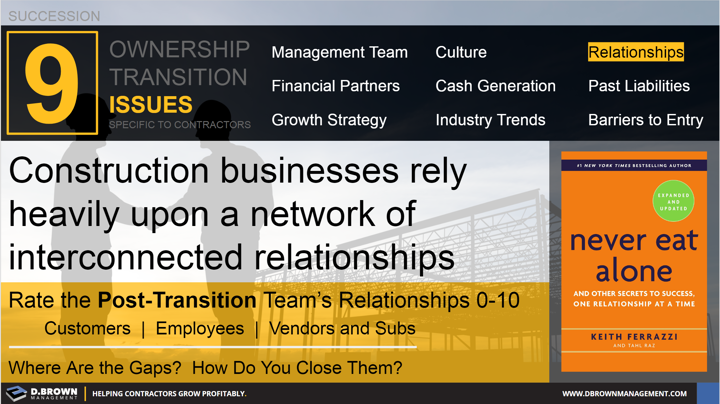Construction businesses rely heavily upon a network of interconnected relationships for their sustainable growth.
These relationships are built on a foundation of trust over many years.
- Customers who know you will get the job done and do the right thing throughout the construction process, even when things go wrong.
- Employees who have seen how you have weathered the ups and downs of the business, including how fairly you have treated everyone even when there was no right answer.
- Vendors and subcontractors that are aligned with how your team works and will help you win critical projects.
- Financial partners, including the bank and surety and insurance companies that have confidence in how you manage through the inevitable ups and downs of the market.
Take a critical look at your post-transition management team and rate the quality of their relationships with each of these groups and down to the specific people.
Identify the gaps and develop a plan to close them.

